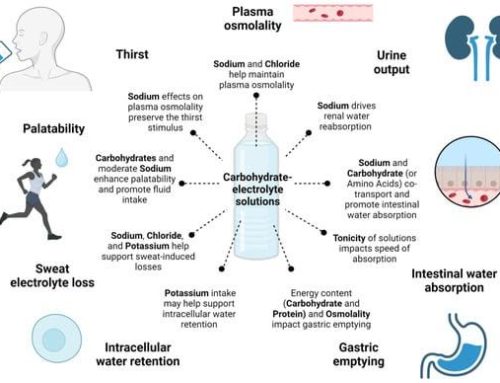At some point in your life, you’ve probably heard someone tell you that muscle weighs more than fat. But, does muscle actually weigh more than fat, or is this just another dieting myth? Thankfully, we’re here to set the record straight with this guide to muscle, fat, and all things body composition.
Contents
What Weighs More, Fat Or Muscle?
Before we get started, take a second to consider the statement, “muscle is heavier than fat.” Does it really make sense?
If you think about it, a pound of muscle weighs the exact same as a pound of fat. In fact, they both weigh one pound!
So, where did this saying even come from? Well, it turns out that what people are actually referring to when they say “muscle weighs more than fat” is density, not weight or mass.
A pound of any object, whether it’s paper or bricks, will have the same weight – one pound. But, some objects take up more space than others, even if they’re the same weight. This is because some objects are denser than others.
To wrap your head around this concept, picture a pound of gold and a pound of feathers balanced on both sides of an old-fashioned scale. While both objects weigh the same (one pound), feathers are significantly less dense than gold. So, in this example, you’ll need a much larger pile of feathers than gold to balance out your scale.
The exact same thing is true when we talk about muscle and fat. When you compare a pound of muscle to a pound of fat, you’ll find that muscle is quite dense, while fat is rather fluffy. For reference, a pound of muscle will be about the size of a tangerine, while a pound of fat will be more or less the size of a grapefruit.
What’s The Difference Between Muscle And Fat?
If you were to ask a group of adults why they choose to exercise, many of them would tell you that they’re trying to lose weight. Indeed, a 2018 study from the CDC’s National Center for Health Statistics shows that over 49% of American adults are trying to lose weight.
But, when people say they’re trying to “lose weight,” what they’re referring to is fat, not muscle. Since fat’s primary purpose on the body is to insulate you from the cold, protect our internal organs, and be an emergency source of fuel, it gives us a softer, less-toned appearance than we would have if we were muscular.
Muscle mass, on the other hand, is essential for our strength and fitness. Our muscles are what allow us to move our bodies, whether it’s to get dressed in the morning or to go on a run. High levels of muscle also make us look more toned, so it’s not surprising that physical appearance and the desire to lose body fat are some of the biggest motivators for exercising.
Plus, high levels of skeletal muscle in the body increase our metabolism, which means we burn more calories per hour, even when we’re at rest. According to Christopher Wharton, Ph.D. at Yale University, 10 pounds of muscle on the body can burn 50 calories in 24 hours, while 10 pounds of fat can burn just 20 calories in the same time frame. This means that a body with more muscle on it can burn more calories while sitting around than a similar size body with a higher body fat percentage.
Muscle Mass v. Fat: Why Should We Care?
Since a pound of muscle and a pound of fat have the exact same weight, you might be wondering why you should care about the difference between fat and muscle in the first place. Well, it turns out that people with too much body fat and who are considered obese have a higher risk of developing something called “adult metabolic syndrome.”
Adult metabolic syndrome is a cluster of conditions that frequently occur together. These conditions include high blood sugar, high cholesterol, and increased blood pressure. If left untreated, people with adult metabolic syndrome are likely to develop life-threatening issues, such as strokes, Type 2 diabetes, and heart disease. Fortunately, people with a high muscle-to-fat ratio and a healthy amount of body fat are significantly less likely to develop adult metabolic syndrome.
It’s also worth noting that people with a high body fat percentage have a much higher risk of early mortality than their low body fat peers, regardless of their weight or BMI (body mass index). This indicates that even people who are relatively lightweight (but have a high body fat percentage) are at risk of developing life-threatening body fat-related conditions.
While you can certainly have too much body fat, you can’t have too much muscle. Research shows that adequate muscle mass is vital for a healthy metabolism. Plus, both muscular strength and fitness have been linked to a decreased risk of developing high blood pressure and other signs of heart disease.
BMI v. Body Fat Percentage
It’s important to keep in mind that when we talk about the health implications of having too much body fat, we are not talking about someone’s BMI. Body Fat Percentage and BMI are entirely different ways of measuring someone’s levels of health and fitness (each with their own advantages and disadvantages).
Someone’s BMI is basically a quick and easy way to guess whether or not someone is overweight. To calculate someone’s BMI, you can just use an online tool where you input their height and weight.
These online tools will give you a number that will then tell you if someone is underweight, normal weight, overweight, or obese based on a set standard. Here are the BMI standards for these different categories:
- Underweight: <18.5
- Normal Weight: 5-24.9
- Overweight: 0-29.9
- Obese: >30.0
However, BMI is not always a good tool to use, especially for people with large amounts of muscle mass. For example, someone like NBA basketball superstar LeBron James (who is 6’9″ and 250lbs), has a BMI of 26.8, which makes him “overweight.” Yao Ming, who is 7’6″ and 310lbs, clocks in with a BMI of 26.9, so he’s also “overweight.”
Anyone who’s seen either of those basketball stars in action would have a hard time arguing that they’re overweight. Sure, they might be quite heavy for their height, but this is because muscle is more dense than fat. So, even though Yao and LeBron are massive guys, much of their weight is muscle mass, not fat.
This means that a simple calculation like a BMI score can’t differentiate between someone who is heavy because they’re muscular and someone who is heavy because they have a lot of body fat.
In comparison, someone’s body fat percentage is a much more reliable measure of their physical well being. Body fat percentage can be measured in a number of ways; the most commonly used techniques involving calipers or something called “Bioelectric Impedance” (BIA).
Regardless of how you do it, when you measure someone’s body fat percentage, you then compare it with a table showcasing normal body fat percentages for that person’s age and gender. According to the University of Pennsylvania, healthy body fat percentages include:
| Age | Female | Male |
| 20-29 | 16.5% – 22.7% | 10.5% – 18.6% |
| 30-39 | 17.4% – 24.6% | 14.5% – 21.3% |
| 40-49 | 19.8% – 27.6 % | 17.4% – 23.4% |
| 50-59 | 22.5% – 30.4 % | 19.1% – 24.6% |
| 60+ | 23.2% – 31.3% | 19.7% – 25.2% |
Body fat percentages have nothing to with someone’s weight or height; Rather, they simply tell us how much body fat someone has. This makes body fat percentage a much better indicator of someone’s current health and their likelihood of developing medical issues (such as adult metabolic syndrome) in the future.
The Bottom Line
No matter how you slice it, a pound of muscle, technically, weighs the exact same as a pound of fat. However, muscle is denser than fat, which is why measurement systems like BMI (that rely on someone’s height and weight), are not always very accurate.
Since high body fat percentages are directly correlated with an increased risk of health issues (as well as early mortality), proper exercise and a well-rounded diet are critical for our long-term well-being. At the end of the day, keeping our body fat percentages low is extremely important for our health.








Leave A Comment